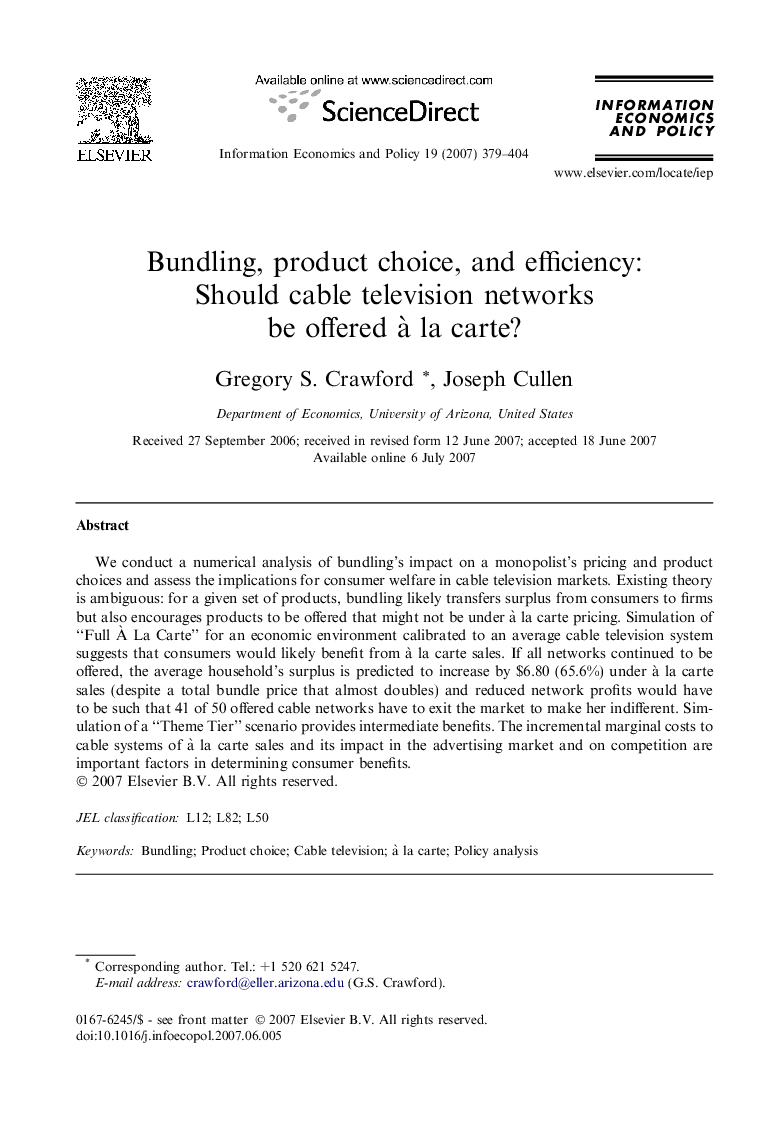| Article ID | Journal | Published Year | Pages | File Type |
|---|---|---|---|---|
| 5076045 | Information Economics and Policy | 2007 | 26 Pages |
Abstract
We conduct a numerical analysis of bundling's impact on a monopolist's pricing and product choices and assess the implications for consumer welfare in cable television markets. Existing theory is ambiguous: for a given set of products, bundling likely transfers surplus from consumers to firms but also encourages products to be offered that might not be under à la carte pricing. Simulation of “Full à La Carte” for an economic environment calibrated to an average cable television system suggests that consumers would likely benefit from à la carte sales. If all networks continued to be offered, the average household's surplus is predicted to increase by $6.80 (65.6%) under à la carte sales (despite a total bundle price that almost doubles) and reduced network profits would have to be such that 41 of 50 offered cable networks have to exit the market to make her indifferent. Simulation of a “Theme Tier” scenario provides intermediate benefits. The incremental marginal costs to cable systems of à la carte sales and its impact in the advertising market and on competition are important factors in determining consumer benefits.
Related Topics
Social Sciences and Humanities
Business, Management and Accounting
Management of Technology and Innovation
Authors
Gregory S. Crawford, Joseph Cullen,
